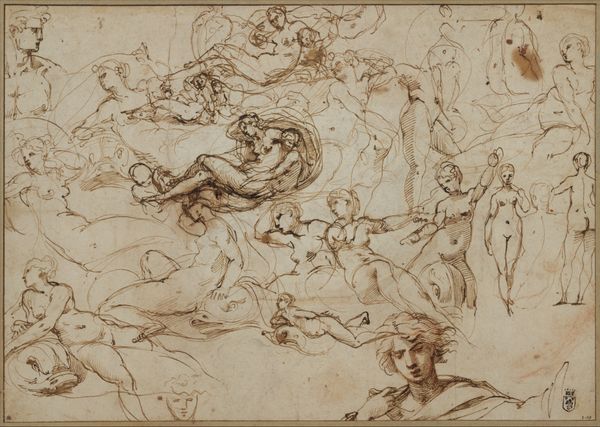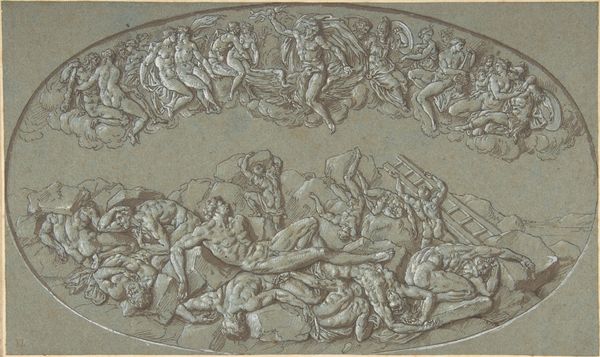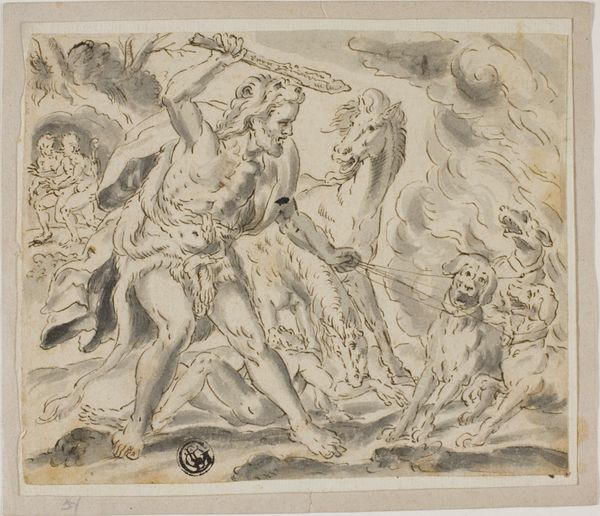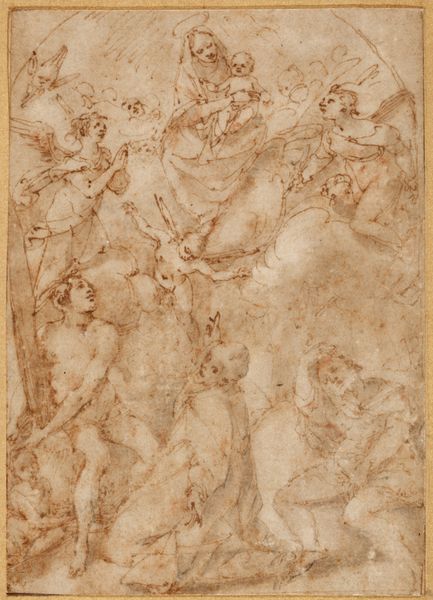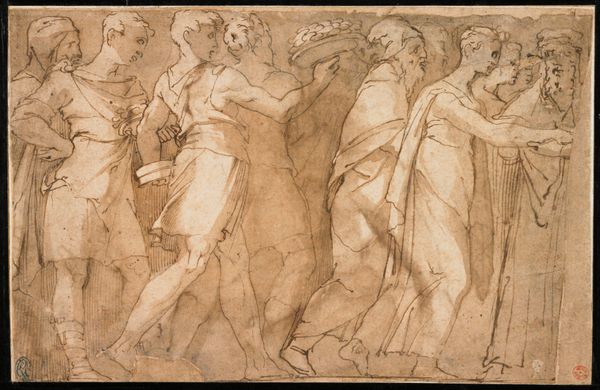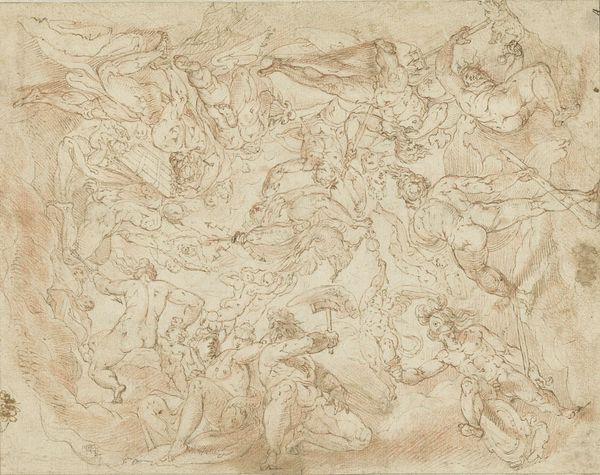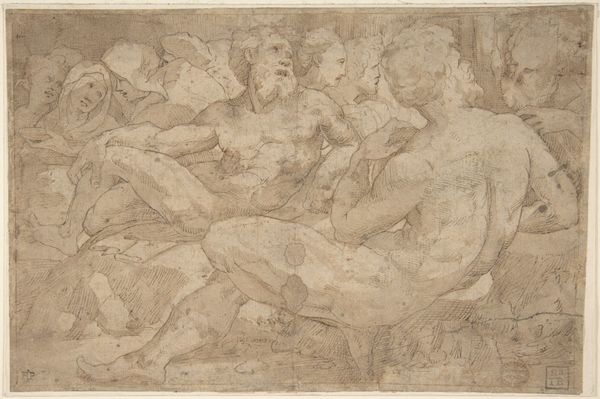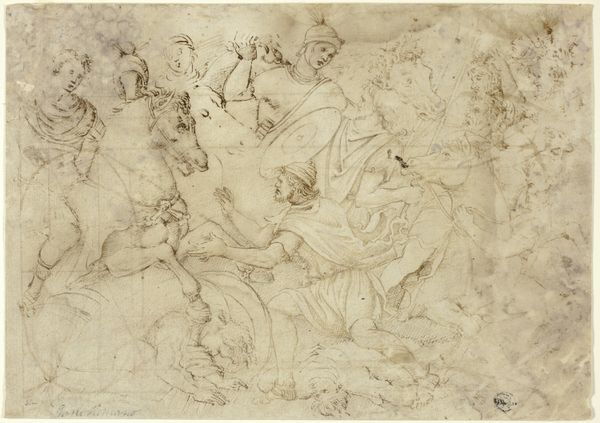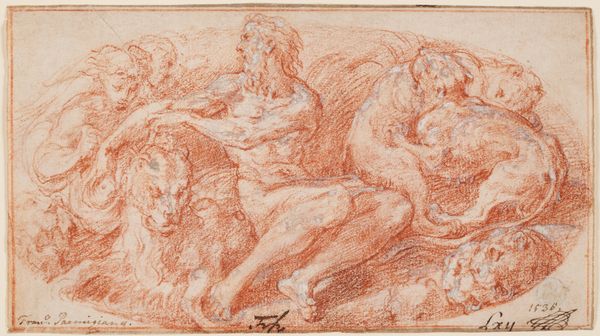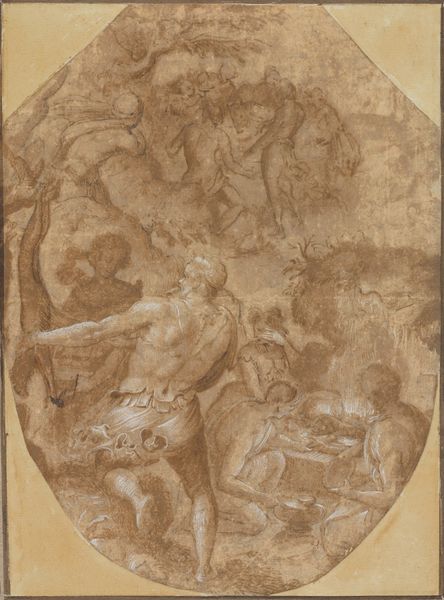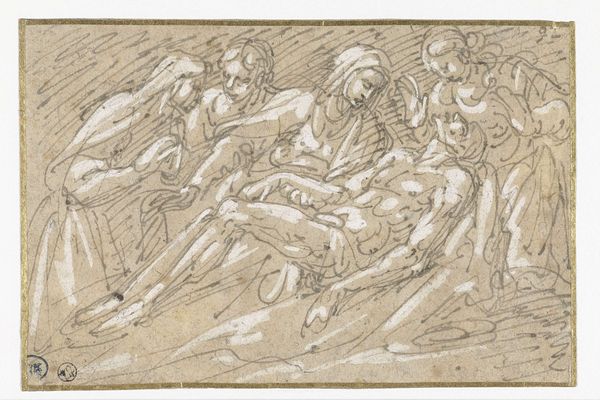
Four (?) Nude Women in the Clouds Surrounded by Putti 1691 - 1722
0:00
0:00
drawing, print
#
drawing
#
baroque
# print
#
figuration
#
11_renaissance
#
academic-art
#
nude
Dimensions: Sheet: 6 5/16 × 8 1/16 in. (16 × 20.4 cm)
Copyright: Public Domain
Curator: Here we have "Four (?) Nude Women in the Clouds Surrounded by Putti" a drawing by Benoît Le Coffre, made sometime between 1691 and 1722. What are your initial thoughts? Editor: My first impression is its warmth – it practically glows. That reddish chalk lends it an ethereal, almost dreamlike quality. The composition feels loose, dynamic, the figures swirling amidst the clouds. Curator: Indeed. Le Coffre was working within a deeply established academic tradition. These swirling figures, the idealized nudes, echo Baroque sensibilities while clearly demonstrating a mastery of the figure. Editor: What strikes me, however, is the immediate sense of movement achieved with what appears to be a pretty economical use of materials – red chalk on paper. The cross-hatching to build up the forms… you can practically feel the artist's hand at work. Was this drawing intended as a study for a larger piece, perhaps? Curator: It very well could be. Drawings like this would have been integral to the academic system. Artists would make countless studies of the nude figure, honing their skills, demonstrating their knowledge of classical forms. Editor: So, in a way, it's a record of labour? These marks show technical training. I wonder what the economies were around academic workshops in Paris at the time. And it looks like the paper itself may have been cut. Curator: A drawing like this offered an aspiring artist a vital opportunity to secure commissions and integrate himself into elite circles. These putti for example were common symbolic forms in royal portraiture at the time. It's hard to overstate the political and economic incentives shaping art during this era. Editor: The visibility of this preparatory process invites one to see all the layers of effort that goes into the kind of skill and image-making being fostered at academies. It makes one rethink how we traditionally assess the work of masters as something like sheer innate genius, by actually making the materials, effort, and modes of production highly visible. Curator: It’s true. Understanding this work through a purely aesthetic lens, admiring only the finished drawing, overlooks the systems of power that sustained it. We gain a much richer understanding by considering both its making and its cultural role. Editor: Absolutely. Thinking about the materials and processes helps us deconstruct the often-mythologized view of art history, no? Curator: Indeed. Now, it's hard to simply *see* without context and thoughtful interrogation.
Comments
No comments
Be the first to comment and join the conversation on the ultimate creative platform.

